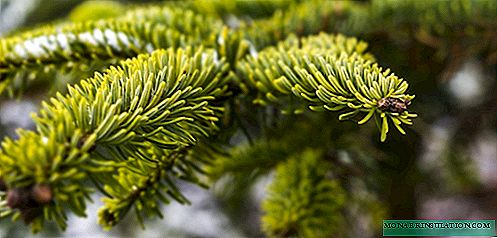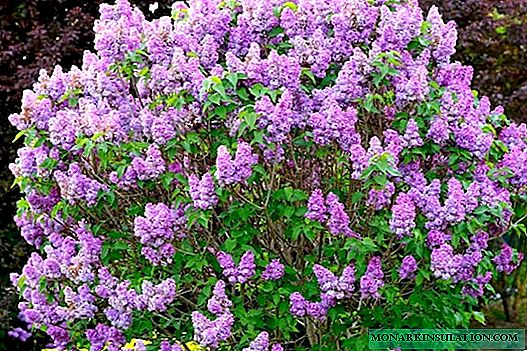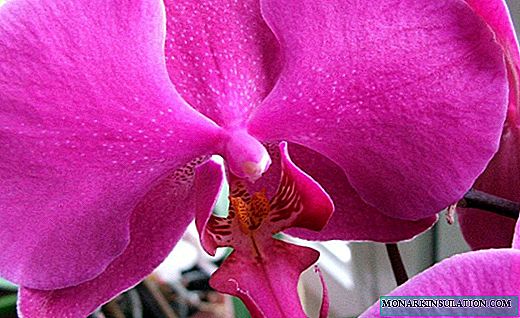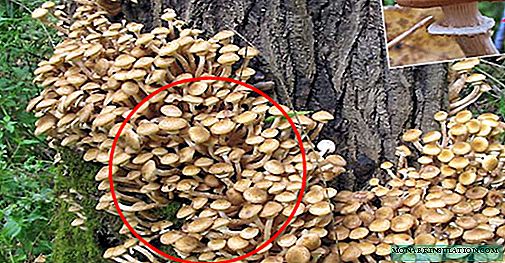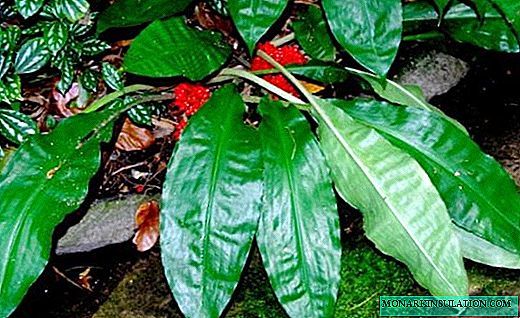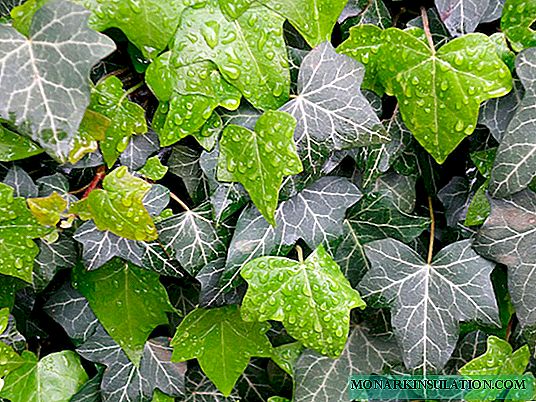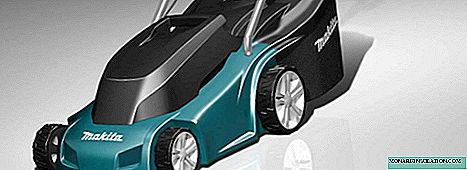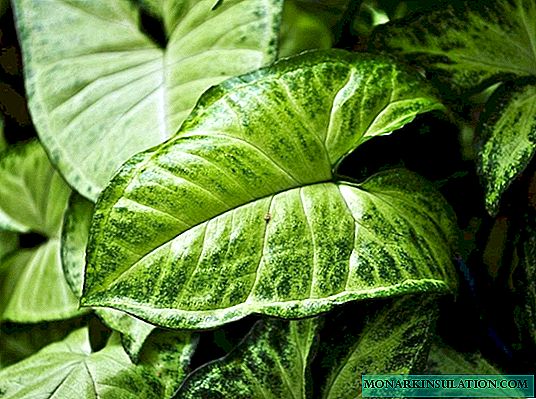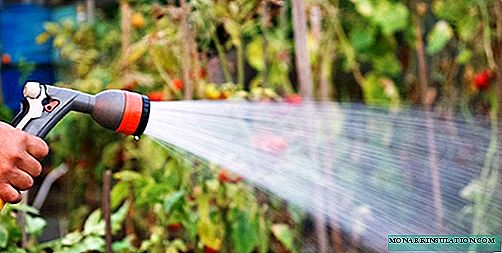
In order for summer cottages to justify the suffering of their owners, who spend the whole summer worrying about the future harvest, it is necessary to establish stable watering. True, in rainy years the weather helps gardeners in many ways, but in the heat you have to run in the morning or evening with watering cans, buckets to “water” the planting. And all because summer cottages are still deprived of a central water supply, and you have to get out on your own. But still there is a way to facilitate watering, relieving the owners of heavy buckets that later will come in back pain in the spine. You just need to go to the store where the pumps for watering the garden are sold, and find a suitable system.
Where will we get water from?
First of all, decide where you get water for irrigation. From the point of view of plants, the water should be settled and warm. Cleanliness does not play a special role. The main thing is that there should be no chemicals or other "poison". The best source is, of course, rainwater, which the owners collect in barrels, basins and other utensils, placing it under the drains. If a well is dug at the dacha or a well is drilled, then water is taken from there. True, garden plants do not really like the “cold shower”, which causes rotting of the roots, but you can first fill the containers with water, and after it is warmed up in the sun, start watering.
Another good source is a home pond, pool or pond. In each of them, water must be periodically updated, so that summer residents get a double benefit: they pour water on the garden and clean the water structure. True, pools are useful only if you do not use chemicals to clean and disinfect them. Some summer residents who are fortunate enough to have a site near a natural reservoir (rivers, lakes) carry water from there. Based on which of the above sources supplies you with water, choose pumps for watering summer cottages.
We select the pump to a water source
For gardening purposes, four types of water pumps can be used: barrel, surface, submersible and drainage.
Watering from tanks: barrel pump
Easy to install and convenient to use is considered a barrel option. It was created specifically for pumping water from storage tanks, such as barrels, eurocubes, etc.

With a barrel pump, water can be pumped from tanks up to 1.2 m deep.
The weight of such systems is not more than 4 kg, so you can walk with it throughout the site, installing alternately on containers that are arranged to collect precipitation. Most often, a watering pump from a barrel is designed for a tank up to 1.2 m deep. It is fixed on the edge of the tank, connected to the electrical network and watering begins. There is a pressure regulator on the pump with which you can set a higher or lower pressure, a filter that traps debris, and a hose.
A big plus of barrel pumps is the low noise level. When choosing this model, you need to pay attention to how much capacity it is designed for, how much it can pump water in an hour. The most reliable are considered pumps with two-stage mechanisms. They have higher performance and longer service life. So summer residents, who have a large area for the garden and flower garden, should pay attention to powerful systems.
Some special rules must be taken into account when selecting pumps for pumping and pumping water: //diz-cafe.com/tech/dachnyj-nasos-dlya-otkachki-vody.html

Lightweight barrel pump can be transported anywhere in the site
Barrel pumps are also convenient because water can be diluted with all kinds of fertilizers and water the garden with ready-made solutions.
Surface pumps: "friends" with ponds and shallow wells
If the main source of water is a natural or artificial pond, as well as a pond, pool or shallow well, then you should buy a surface pump. It is designed to pump water from depths up to 10 meters.

Surface pumps to reduce vibration placed on rubber mats
Such an aggregate is placed, as a rule, on the ground, and injection is carried out using a special water intake hose, which is lowered into the source. On the other hand, a metal pipe is connected. It is not recommended to use rubber hoses to drain liquid to the surface, because the unit pumps water by suction. From this, rarefied air may form inside the hose. As a result, the walls will shrink and prevent the water flow from moving normally upward. Such systems are popular for ease of installation: you only need to put the unit on a flat, dry surface and connect the hoses. It is interesting that such pumps can produce a powerful jet at a level of 30-50 meters, so that you can water most of the beds from one place.
A spoon of tar! Surface units are very noisy, so they are hidden in a business building in order to somehow get rid of the "growl". You can also reduce the noise level by placing the system on a rubberized mat that suppresses vibration. Read more about choosing a pump for summer cottages and fountains: //diz-cafe.com/voda/nasos-dlya-fontana-i-vodopada.html
Submersible pump: able to get water from the well
Submersible pumps are rarely used for gardening purposes, but if a well is broken in a cottage or if the water level is below 10 meters in a well, then you cannot do without them. They are lowered below the water level into the source, and liquid enters the surface through ordinary hoses. An important indicator of submersible systems is the height to which they are able to raise the water flow. If the well is shallow, then a simple model, designed for 40 meters in height, will perfectly cope with the rise of fluid. For greater depths, you need to look for models that are able to push the jet 80 meters.

Submersible pumps are difficult to install, so they are rarely used in irrigation
Among the minuses can be called the complexity of installation and maintenance, which should be carried out only by professionals, as well as the need to clean for the winter, if during this period the system will not be used. And dismantling also requires the invitation of specialists. Submersible pumps exist in two versions: vibration and centrifugal. The vibratory ones have a lower price, but they are afraid of getting into the sludge. Centrifugal pumps raise water due to the operation of the blades and wheels with such force that dirty water does not scare them. But their cost is much higher.
You may need a motor pump. In which cases it is worth choosing it: //diz-cafe.com/tech/motopompa-dlya-poliva-ogoroda.html
Dirty pond or swamp: a drain pump rushes to the rescue
Drainage pumps are available for other purposes: they pump out flooded rooms and cesspools. So no debris and particulate matter is not afraid of them. For irrigation of beds, a system with a grinder for pumping out cold drains is quite suitable. If silt, leaves and other garbage get inside, the chopper will chop them into small pieces and give them out to the garden with water. For very dirty natural ponds, this is the best option, because other models will become clogged with large solid particles. By the way, grinding sludge and small inhabitants of the reservoir, such a pump will provide the earth with additional natural fertilizer.

Drainage pumps are suitable for summer residents who use water from ponds
Automatic watering pumps with timers
For owners who do not have time to deal with watering for hours, it makes sense to buy a pump for drip irrigation. Such systems are equipped with a pressure switch, a pressure gauge and a hydraulic accumulator. These mechanisms work in a human-installed mode automatically. For drip irrigation, you need to set the minimum pressure level, and then the water will flow in a slow stream. In such systems, there is both manual and automatic control by a timer.

The automatic system allows you to set the mode required for drip irrigation
When choosing a specific pump option, pay attention to what water it is designed for. So, irrigation units can be used only for wells, wells and containers, because any small debris will clog the system and quickly disable it. Other sources (reservoirs, pools, ponds, etc.) require a drainage pump, or even a fecal pump, depending on the degree of water pollution.

